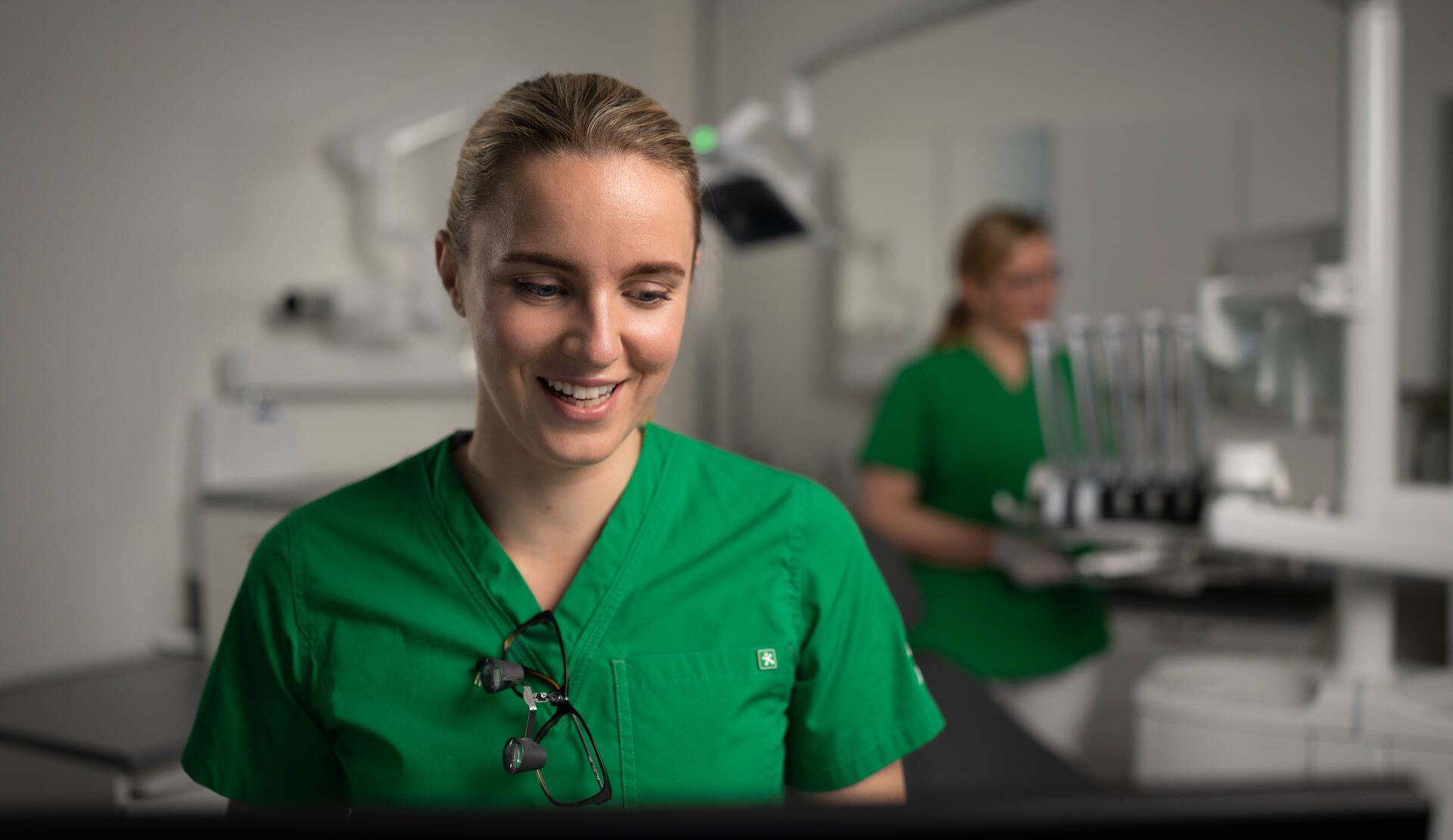
Scar revision surgery
Specialist in the article

Revised 5/28/2025
Scar revision surgery in brief
- Scar revision is a process aimed at improving the appearance of a scar and reducing its impact.
- Methods for scar revision include surgery, laser treatment, taping, pressure therapy, and corticosteroid injections.
- Scar revision surgery is safest 6–12 months after the scar forms, while taping should begin immediately.
Help for scars through plastic surgery
When the skin is damaged due to an accident, surgery, or burn, it heals through tissue regeneration and scarring. Superficial skin injuries heal invisibly, but deeper wounds leave scars. An experienced plastic surgeon can help improve various scars using diverse methods.
The appearance of scars is influenced by many factors, such as the tendency for scar growth and their location. On stretchable areas like the back or joints, scars may spread more. Wide and sunken scars can also form if a surgical wound becomes infected, reopens, or is under tension. A spread scar can often be improved with surgery, supportive sutures, and subsequent taping therapy.
Tight scars can be corrected using techniques like Z-plasty, which improves skin mobility and reduces both cosmetic and functional discomfort. Scar revision surgery is safest after the scar maturation process, approximately 6–12 months after the scar forms. If a scar is operated on earlier, it may result in an even more problematic scar.
Scar overgrowth and keloid scars
Sometimes a scar can grow raised, hard, and red, known as a hypertrophic scar. A keloid is an overgrown scar that extends beyond the edges of the original wound onto surrounding skin. The tendency for hypertrophic and keloid scars is hereditary and most commonly occurs on the shoulders, chest, and earlobes.
Preventing scar overgrowth involves avoiding tension and using wound tape, often for six months. Silicone-based scar gels may also help. If redness or overgrowth occurs, keloid scars can be treated in various ways.
Abnormal scars can be removed surgically, and after removing the sutures, the growth of a new scar can be controlled with silicone sheet therapy. If necessary, the scar area can also be treated with corticosteroid injections. Additionally, plastic surgeons may use laser treatments for scar revision.
Preparing for scar revision surgery
- Consultation: After discussing with a plastic surgeon, who evaluates the type and location of the scar and your preferences, the surgeon explains the different treatment options and recommends the best method.
- Surgery planning: Scar revision surgery is planned based on individual needs, aiming for the most natural and inconspicuous result.
- Lifestyle improvements: Quit smoking at least two weeks before surgery and maintain good physical condition. Being overweight increases the risk of complications.
- Support: Ensure you have help with household tasks and shopping during recovery.
How scar revision surgery proceeds
You will meet the operating plastic surgeon, who will go over the procedure, pain management, possible anesthesia, and answer any questions you may have.
Scar revision surgery is usually performed under local anesthesia but can be done under general anesthesia if necessary. The plastic surgeon places new surgical scars along the natural folds of the skin to make them less noticeable. Deep scars can be smoothed with fat transfer.
Internal supportive sutures prevent scar stretching and support the tissue, helping the scar heal less visibly. Wide scars can be narrowed surgically, and the revision can be done under local or general anesthesia.
At the end of the surgery, the surgeon carefully closes the wound with sutures that support healing and prevent the formation of a new, visible scar.
Most scar revisions are performed as day surgeries – you can usually go home the same day.
Recovery from scar revision surgery
During recovery, it is important to follow all the doctor’s instructions and attend follow-up appointments as needed. Recovery is individual and depends on factors such as the scar’s location, the extent of the surgery, and the patient’s overall health.
- Immediate Recovery: In the first few days, the operated area may be tender, swollen, or tight. Avoid physical strain and stretching the skin. Pain relief and cold therapy can be used if necessary.
- Hygiene: The wound is protected with a dressing, and hygiene is carefully maintained.
- Suture Removal: Sutures are usually removed about 1–2 weeks after the procedure. The wound closes, and the skin’s surface layer begins to heal.
- Scar Maturation: In the following weeks and months, the scar may be red, raised, and itchy. Over time, the color fades, and the surface smoothens – this process often takes 6–12 months.
- Aftercare: After suture removal, silicone sheet therapy or corticosteroid injections can be used to control scar growth. Aftercare may also include other methods, such as laser treatment or chemical peels.
- Sun Protection: Protecting the scar from the sun is important to prevent darkening.
- Restoring Mobility: If the scar is in an area affecting mobility, such as near joints, physiotherapy may be recommended. Movements are restored gradually according to the plastic surgeon’s instructions.
- Follow-Up: A follow-up visit is usually scheduled within a couple of weeks after surgery to assess scar healing and provide additional treatments if necessary.
The prices presented are indicative. The exact price will be determined after a consultation with the plastic surgeon, once individual needs have been assessed. The decision to proceed with surgery can be made after the consultation.
The final price is influenced by factors such as:
- Value-added tax (VAT): If the surgery is part of medical treatment, such as breast reduction or eyelid correction, no VAT is charged for the procedure. If a similar surgery is performed for aesthetic reasons, VAT will be added to the price.
- Procedure location: The price is affected by whether the surgery is performed in outpatient procedure conditions or as day surgery in a hospital.
At Mehiläinen, you can flexibly use various payment methods, such as paying in installments. Read more about payment methods.
| Service | Price estimate |
|---|---|
| Abdominoplasty also known as tummy tuck, vat 25.5 % The price does not include compression garments, 100–200 €, or overnight monitoring and on-call services, 740–1500 €/night. | from 9 550,00 € No Kela reimbursement |
| Scar revision in the head or neck area, vat 0 % | from 550,00 € No Kela reimbursement |
| Facelift, vat 25.5 % The price does not include compression garments, 100–200 €, or overnight monitoring and on-call services, 740–1500 €/night. | from 13 600,00 € No Kela reimbursement |
| Eyebrow lift, vat 0 % | from 4 100,00 € No Kela reimbursement |
| Eyebrow lift, aesthetic, vat 25.5 % | from 5 150,00 € No Kela reimbursement |
| Rhinoplasty, vat 25.5 % | from 12 900,00 € No Kela reimbursement |
| Removal of a mole or skin lesion, vat 0 % The price does not include potential tissue sample analysis. Tissue sample analysis starts at 122.50 €. | from 470,00 € No Kela reimbursement |
| Removal of a mole or skin lesion with a laser in the head or neck area, vat 0 % The price does not include potential tissue sample analysis. Tissue sample analysis starts at 122.50 €. | from 430,00 € No Kela reimbursement |
| Forehead lift, open or endoscopic, vat 25.5 % The price does not include compression garments. Compression garment prices are 100–200 €. | from 7 300,00 € No Kela reimbursement |
| Liposuction from a small area (e.g., under the chin, vat 25.5 % The price does not include compression garments. Compression garment prices are 100–200 €. | from 2 900,00 € No Kela reimbursement |
| Liposuction from a larger area, e.g., abdomen and flanks, vat 25.5 % The price does not include compression garments. Compression garment prices are 100–200 €. | from 8 150,00 € No Kela reimbursement |
| Removal of breast implants from both breasts, vat 25.5 % | from 4 600,00 € No Kela reimbursement |
| Breast lift surgery for both breasts, vat 25.5 % The price does not include compression garments. Compression garment prices are 100–200 €. | from 9 600,00 € No Kela reimbursement |
| Breast reduction surgery for both breasts, vat 0 % The price does not include compression garments. Compression garment prices are 100–200 €. | from 8 800,00 € No Kela reimbursement |
| Breast reduction surgery (aesthetic) for both breasts, vat 25.5 % The price does not include compression garments. Compression garment prices are 100–200 €. | from 11 000,00 € No Kela reimbursement |
| Breast augmentation with implants, vat 25.5 % The price does not include implants or support bras. Implant prices are 580–1100 €/pair. Compression garment prices are 100–200 €. | from 5 800,00 € No Kela reimbursement |
| Upper eyelid surgery for both eyes, vat 0 % | from 2 050,00 € No Kela reimbursement |
| Upper eyelid surgery (aesthetic) for both eyes, vat 25.5 % | from 2 600,00 € No Kela reimbursement |
Other related services
Body and breasts
Comprehensive and expert plastic surgery for the body and breasts.
Consultation with a plastic surgery nurse
A free consultation helps you find the right treatment options.
Face and eyelids
We provide personalized solutions for the aesthetic needs of your face and eyelids.
Nose and ears
Enhance the shape and structure of your nose or ears with the expertise of a plastic surgeon.
Plastic surgeon
A specialist in plastic surgery performs treatments and surgeries to enhance the appearance and functionality of the face and body.
Skin lesions and moles
Treat skin lesions and remove moles safely and discreetly.
Frequently asked questions about scar revision surgery
In scar revision surgery, a plastic surgeon reshapes the tissue around the scar to make it less noticeable. Various techniques, such as scar reshaping, skin grafts, or laser treatments, may be used depending on the type and location of the scar.
Scar revision surgery can improve the appearance of a scar and make it less visible. It can also help alleviate pain or discomfort caused by the scar and, in some cases, improve mobility if the scar restricts it.
Recovery from scar revision surgery typically takes a few weeks to a few months. Swelling and redness decrease in the first few weeks, but the final appearance of the scar may improve for up to a year after surgery.
Scar revision surgery is generally safe when performed by an experienced and qualified surgeon. However, like all surgical procedures, it carries risks such as infection, bleeding, and scar recurrence. It is important to discuss potential risks and benefits with a plastic surgeon before undergoing surgery.
The cost of scar revision surgery depends on factors such as the extent of the surgery and the techniques used. The price usually includes the initial consultation, the procedure itself, any necessary hospital care, and follow-up appointments. A precise cost estimate can be provided during a consultation with a plastic surgeon, once the scope and details of the procedure are determined. Learn more about Mehiläinen’s flexible payment options.

